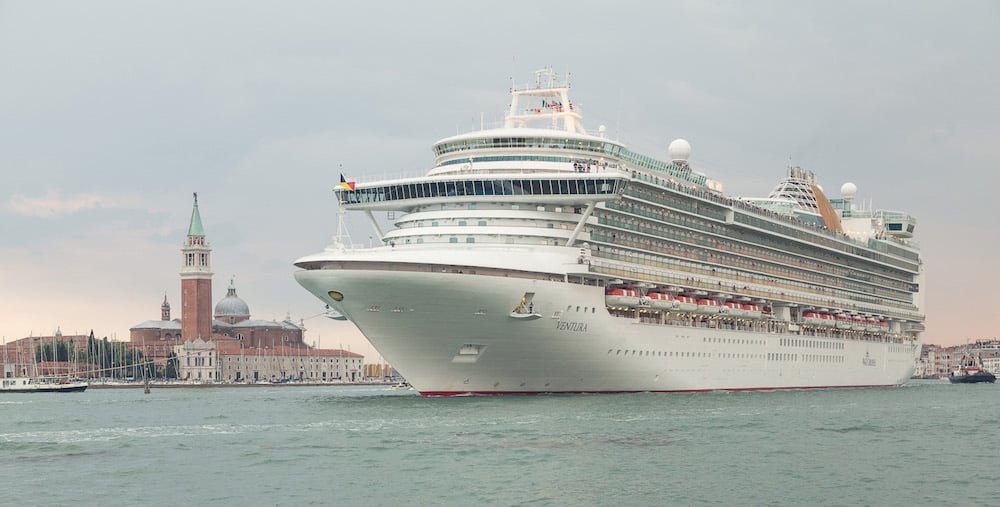Law & Politics
The Italian Government Has Officially Banished Hulking Cruise Ships From the Venice Lagoon (For Real This Time)
The historic city's picturesque waterways have been declared a national monument.

The historic city's picturesque waterways have been declared a national monument.

Naomi Rea

In an historic move, the Italian government has granted protected heritage status to the Venice lagoon and banished towering cruise ships from entering its waterways.
The landmark decision came on Tuesday, July 13, ahead of a meeting of the United Nations cultural heritage body UNESCO, which had threatened to place the lagoon on its list of World Heritage in Danger.
Venice first pledged to ban the hulking ships back in 2012, and a series of resolutions put in place since then have failed to materialize. Now, for the first time, authorities have instituted a firm date by which cruise liners will be blocked from the waterways: August 1.
The decision comes as a victory for local residents and environmental campaigners, who have been fighting to ban cruise ships from the lagoon for years, warning of the need to protect its fragile ecosystem from mass tourism. On the other side, public authorities were reluctant to jeopardize the economic boon brought to the city by the cruise industry.
The most recent promise to ban the mega-ships came from Italian Prime Minister Mario Draghi back in April—but it was predicated on the condition that the government build an alternative port for tourists to disembark, which could take years to complete.
The ban was expedited on the eve of a meeting of UNESCO’s World Heritage Committee, which was due to discuss the conservation of the historic city and lagoon. In a statement, Italy’s Culture Minister Dario Franceschi explained that he wanted “to avoid the real risk” that the city would be classed as an endangered world heritage site.
The new decree removes the building of a new port as a condition of the ban and designates the urban waterways of the San Marco basin and canal, as well as the Giudecca canal, as a national monument.
After August 1, no ships heavier than 25,000 tons, longer than 180 meters (about 590 feet), taller than 35 meters (about 115 feet), or which use more than 0.1 percent sulfur content in their fuel will be allowed to enter the lagoon.
While the decree primarily targets large cruise ships, some mega-collectors swanning in for the Venice Biennale on superyachts could also be affected.
In a few short weeks, cruise ships will be diverted to the nearby industrial port of Marghera, where the regional authority will be responsible for building at least four temporary docks, according to a statement from the Italian Culture Ministry. The prime minister has also promised to compensate sailing companies and other businesses reliant on cruise traffic that will be adversely affected by the ban.